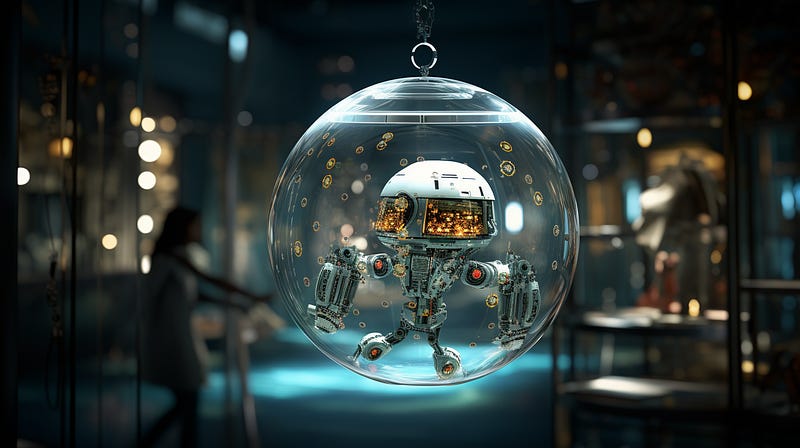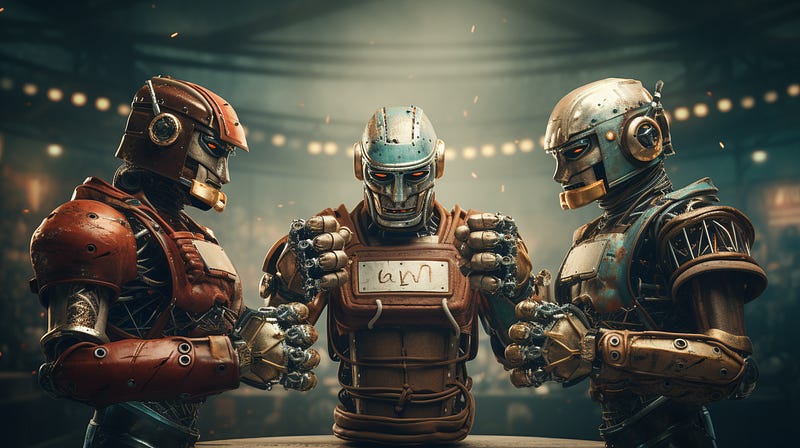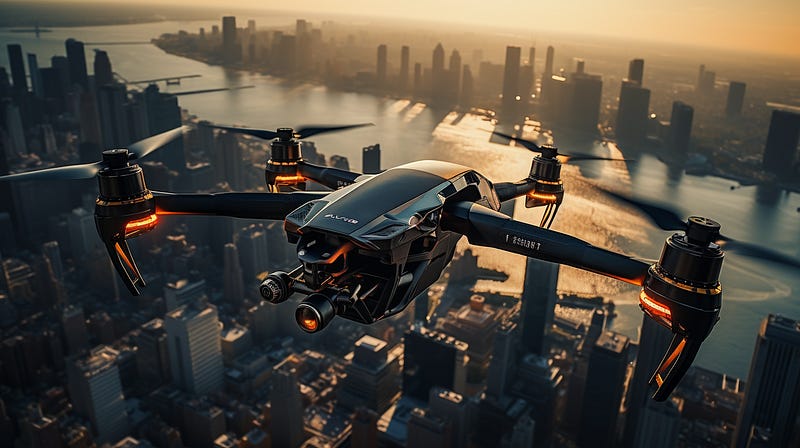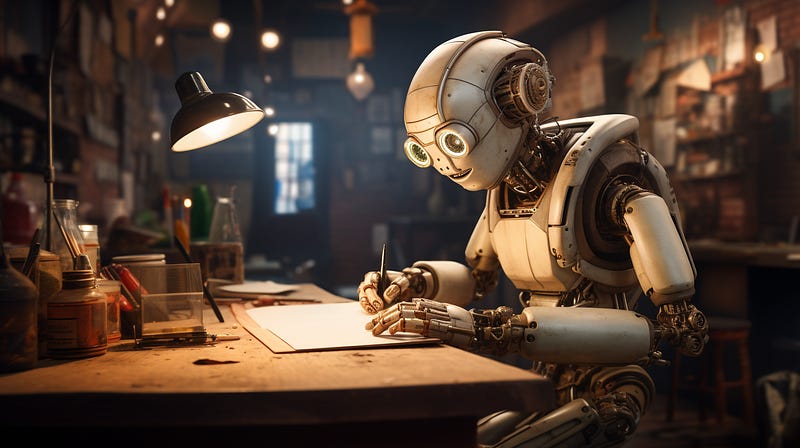And 4 Other Open AI Related Questions
In just a few days, we will celebrate the first anniversary of ChatGPT’s launch. This crossing-the-chasm moment was a seismic event for the technology sector and, as time will prove, the world. But will Open AI and its GPT family of products become the ultimate AI winner?
Open AI has by no means fully capitalized on its early market leadership position. Bravado and overpromised results have been met with confusion about what exactly AI can accomplish for businesses and individuals alike. Much of that has to do with Open AI’s willingness to overembellish promise that fails to meet actual functionality.
Complications extend beyond hype. Privacy concerns and legal issues surrounding intellectual property dog the company’s efforts. Open AI has not resolved those issues; instead, it is leaning into more and more innovation announcements and product releases to capture (and distract?) interest.
This month’s epic Sam Altman termination crisis further undermined the company’s stature. The resulting tensions and unresolved problems leave the door open for successors.
At the same time, the large language model AI (LLM) field has yet to catch up to OpenAI’s ChatGPT. In fact, Open AI’s LLM dominance has kept its image generation algorithm Dall.E relevant despite poorer image quality.
As the euphoria of the generative AI boom wanes and the impacts of Open AI’s PR and legal crises are felt, real work to adapt begins. We are moving into a definitive adoption phase.
Here are five questions facing the AI sector about Open AI GPT-related trends. These focus on enterprise adoption, marketing, media, and communications challenges.
1) Is It a GPT World or Will Claude, Gemini or Another Algorithm Win?
One thing Open AI has done well is maintain its LLM market lead with the ChatGPT app as its trailblazer. The company’s licensing approach has created a wide-reaching blanket of wrapped apps like Jasper and Github Copilot, private instances, and new generative elements within larger, more complex AI Models.
Anthropic’s Claude and Google’s forthcoming multimodal Gemini seem to hold the most promise as rivals to the GPT algorithms. Claude 2.1 has rivaled and perhaps surpassed GPT’s text capabilities, but has not caught up to Open AI’s incredible market usage. Significant backing from Amazon and continued stumbles by Open AI may open the door for Claude.
Google Gemini looms over the AI industry like a coming storm. This hyped-up multimodal algorithm will blend various media forms in its generative analysis and outputs. Since Open AI is positioning GPT as the foundation for its multimodal approach, Gemini’s launch teases a head-to-head battle for the future of generative AI.
But this just underscores the larger question, “Is it a GPT world?” Or will one of these market players or another one eventually beat Open AI and lead the LLM marketplace? At this point, it’s really the field versus Open AI.
2) How Long Until Multimodal AI Becomes Tangible?
Multimodal AI to date has been sloppy, especially if you factor outputs into the equation. It reminds me of PCS technology when cellular phones and networks first integrated text messages. Heralded as the arrival of the Internet on the phone, PCS or 2G was a far cry from today’s 5G networks with full video streaming capabilities.
Open AI’s first mover attempt to claim multimodality is just like PCS. Clunky switching between GPT and Dall.E for outputs is far from delivering functional multimedia outputs. Further, Dall.E’s image generation leaves much to be desired, creating an underwhelming first impression of multimodal AI.
The door is open for a more useful multimodal AI. The question is, when will dynamic multimodal AI tools arrive? I think we will see more primitive versions in the near term, but at some point in 2025, multimodal should arrive.
Whenever this promised algorithmic achievement manifests itself, it will change the very nature of AI, just as wireless Internet and voice changed telecommunications forever.
3) When Will AI Vendors Lock In on Enterprise Needs?
As already noted, the AI hype cycle has been overwhelming in many regards. While tantalizing apps like ChatGPT have wooed enterprise customers, most try to force-fit their square pegs into complex enterprise use cases.
The end result? With the exception of companies with pre-existing data science departments, generative AI tools like Chat GPT have made a complex, stilted arrival. Promised outputs have underwhelmed, and security and legal concerns have stopped many experiments in their tracks.
This stunted experience for most has uncovered a wide range of significant barriers to widespread adoption (detailed here). Silicon Valley and CRM players need more robust offerings. As a result, internal departments inside enterprises, their technology vendors, and their service providers are left to figure it out.
Sooner or later, we can expect intra-industry solutions to meet the need. But that will require more thought than shrink-wrapping GPT or another LLM with some training data and a licensing package (cough, I am speaking to certain AI writers).
4) Will Writing and Content Improve?
One clear impact of GPT has been a new base level of acceptable quality in writing. Some individuals and smaller companies have greatly benefited. Others have used it to populate the digital interwebs with robotic spam.
But while initially fearful, most professional writers have been relieved that GPT cannot actually replace them. LLM writing generally suffers from a lack of creativity, rote textbook grammar, wonky pre-programmed tones, and hallucinated stories.
Anyone needing standout content that’s factually accurate and more than blandly informative demands more from their writer. The human must not only remain in the premium writing loop, she/he/they must lead it.
That being said, writers must still adapt the AI suite of tools that can speed up innovative concept development, break writer’s block, and help refine the text. Writers need to stay in front of the curve. Today’s LLMs, including GPT, will only improve; as they do, so will the outputs.
Will writing and content on the Internet improve due to better tools and new higher baselines for minimum quality? I see a near-future scenario where writers and enterprises using AI to augment creativity will excel compared to both robot and human-only writing.
5) Will IP, Legal, and/or PR Woes Trip Up Open AI?
Some brands ruin their reputation through legal woes, unethical behavior, and/or a major PR crisis, permanently damaging their reputation and market prospects. Good product be damned: Wells Fargo’s Account Fraud Scandal, BP’s Deepwater Horizon Oil Spill, and Volkswagon’s Emissions scandal are all examples.
Open AI strikes me as a company ripe for such a problem. Those who claim Sam Altman’s soap opera departure and return earlier this month resolves those problems are sorely mistaken. In fact, I would argue Altman’s larger-than-life approach to PR is the company’s primary source of reputational danger. In short, he likes the limelight too much.
Altman’s pattern of bold statements and, at times, outlandish actions generated tons of press while creating some negative tensions. Consider his recent X war with Elon Musk and his 48-hour temporary employment with Microsoft.
This bold and perhaps not thoroughly thought out strategy has also played out with Open AI’s product releases, approaches to intellectual property use, requests for government regulation, and discussions about artificial general intelligence (AGI, or sentient AI).
Further, Open AI has demonstrated it cannot resolve intellectual property and security complaints about its technology. They are ripe to severely hamper or even halt the company in its tracks. History has one serious example of such a fail, the Napster crash.
Consider Altman’s new tenure has already seen the removal of women from his board and executive leadership teams, as well as almost certain destruction of Open AI’s commitment to building AI that benefits humanity as a whole. Five years from now, if someone told me Open AI crashed because of a legal or ethical PR crisis, I would nod. Yes, that makes sense.
Conclusion
One Year after ChatGPT’s launch, nothing is certain. OpenAI captured lightning in a bottle but faces market challenges, both internal and external. Meanwhile, the technology continues to evolve rapidly, with multimodal AI on the horizon, although practical business applications have lagged.
In the next phase, expect more competition as companies like Anthropic and Google ready alternatives to take on ChatGPT. Multimodal capabilities will also arrive, likely by 2025, significantly expanding what AI can achieve. Realizing AI’s promise in enterprise settings will require moving beyond the hype to solutions that address complex needs.
It’s a brave new world. Whether GPT is a dominant voice in our new AI reality is far from written in stone. And, Open AI may be its own worst enemy as the narrative unfolds.
This story is published on Generative AI. Connect with us on LinkedIn to get the latest AI stories and insights right in your feed. Let’s shape the future of AI together!










